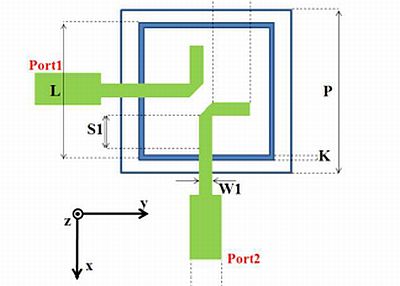
Research Activities on Slot-Coupled Patch Antenna Excited by a Square Ring Slot
Caso R. - University of Pisa (Italy)
Buffi A. - University of Pisa (Italy)
Serra Andrea - EnginSoft (Italy)
Pino M.R. - University of Oviedo (Spain)
Nepa P. - University of Oviedo (Spain)

PRESENTATION
Abstract
In this paper a review on novel slot-coupling feeding technique for patch antennas is presented. A square patch is fed through a square ring slot excited by two non-overlapping feed lines printed on the same side of a single-layer substrate. With respect to other slot-coupling feeding techniques for dual-polarized patch antennas, the configuration here presented exhibits a simple structure and a valuable symmetry property with respect to the two feeding ports, while preserving a satisfactory isolation.
Basing on the slot coupled feeding technique, the following antennas have been designed and prototyped:
• a dual-polarized slot-coupled patch antenna operating in the 3.3-3.8 GHz WiMAX frequency band (14% percentage bandwidth).
• a 2x2 array of dual feed circularly polarized square patches in the WiMAX 3.3-3.8 GHz frequency band. Each array element has been fed through two microstrip lines which are excited 90° out-of-phase (dual-feed technique) and coupled to a square patch by means of a square ring slot realized in the feeding network ground plane. Excellent Axial Ratio (AR) performance has been achieved in the WiMAX band (AR<1.35dB at broadside direction) and for any direction in the antenna main beam (AR<2.25dB at 3.55GHz).
• a single feed circularly polarized square patch. By introducing some simple modifications of the square ring and patch geometries (namely a couple of meanders and slots), a 3dB Axial Ratio (AR) fractional bandwidth up to 9% has been achieved. Explicit reference is made to the design of a WiMAX antenna operating in the 3.3-3.8 GHz frequency band. The antenna has been also been fabricated and characterized. Two stacked versions to enhance the Axial Ratio bandwidth of single-feed square ring slot patch antennas have been also proposed.
• a dual-polarized 2x1 array of stacked square patches fed through square slots. The array is intended as a basic module for base station linear arrays, whose final size depending on beamwidth and gain requirements. Design procedure, simulation results and measurement data have been presented for a 2x1 array working in the GSM 1800-1900 band, UMTS band, ISM band and UMTS 3G expansion band or, alternatively, 2.4 WiMAX band, with a resulting 45% percentage bandwidth.
Most of the work on ring slot coupled patch antennas has been carried out in collaboration with the University of Oviedo, Spain. The proposed antennas have been analyzed numerically using ANSYS Designer, a Method of moments (MoM) based 2.5D EM simulation software.
